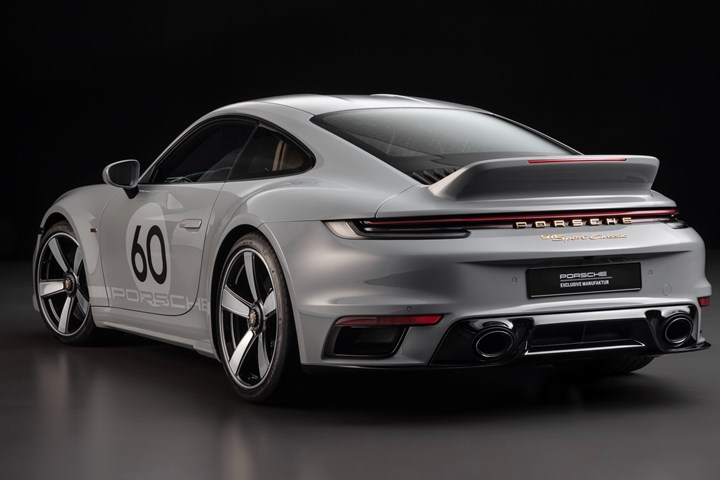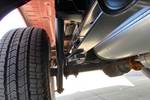The 2023 Porsche 911 Sport Classic is revealed
Porsche releases another tribute to some of its past models, featuring a ducktail spoiler, a double-bubble roof and hood comprised of CFRP.
Share
Read Next

The Porsche 2023 911 Sport Classic. Hood, roof and ducktail spoiler are CFRP. Photo Credit: Porsche
Porsche (Stuttgart, Germany) knows that its classic designs are as popular today as they were before they became classics, so it is metering out to the market a series of four Heritage Design models.
The second model (with the first being the 911 Targa 4S Heritage Design Edition, launched in 2020) has just been announced: the 911 Sport Classic. It features a ducktail spoiler that is a nod to the 911 Carrera RS 2.7 of 1972 and 1973.
So why is this interesting besides that it is still another in a line of stylish 911 executions? Because (1) that spoiler happens to be made with a carbon fiber-reinforced plastic (CFRP) and (2) this vehicle will be available in the U.S.
And while it might be something of a stretch to justify its appearance in CompositesWorld simply on a CFRP spoiler, know that the hood is also made with the material — and that’s not the case on the 911 Turbo S, the vehicle upon which this specialized version is based. The hood is formed with a dip in the center, a design cue that is echoed on the roof, which is also CFRP.
An interesting thing to know about the double-bubble roof: In 2009 Porsche created the 997 Sport Classic, which has the recess in the roof (known in Porsche as the Fuchsfelge).
According to Porsche designer Grant Larson, “We didn’t put the 997 Sport Classic on the market in the U.S. — that was the reason for the small number of 250 units back then. Because a cabin ceiling with recesses would have required specific tests to be conducted. They are required by law in the U.S. This was simply too expensive for the small number of units and the desired level of profitability. That’s why the 997 Sport Classic is also one of the most coveted collector cars in the U.S.”
But it is not like the 911 Sport Classic is going to be produced in mass quantiles. In fact, just 1,250 will be built.
Related Content
-
McLaren celebrates 10 years of the McLaren P1 hybrid hypercar
Lightweight carbon fiber construction, Formula 1-inspired aerodynamics and high-performance hybrid powertrain technologies hallmark this hybrid vehicle, serve as a springboard for new race cars.
-
Cryo-compressed hydrogen, the best solution for storage and refueling stations?
Cryomotive’s CRYOGAS solution claims the highest storage density, lowest refueling cost and widest operating range without H2 losses while using one-fifth the carbon fiber required in compressed gas tanks.
-
Composites manufacturing for general aviation aircraft
General aviation, certified and experimental, has increasingly embraced composites over the decades, a path further driven by leveraged innovation in materials and processes and the evolving AAM market.

.jpg;width=70;height=70;mode=crop)











.jpg;maxWidth=300;quality=90)


